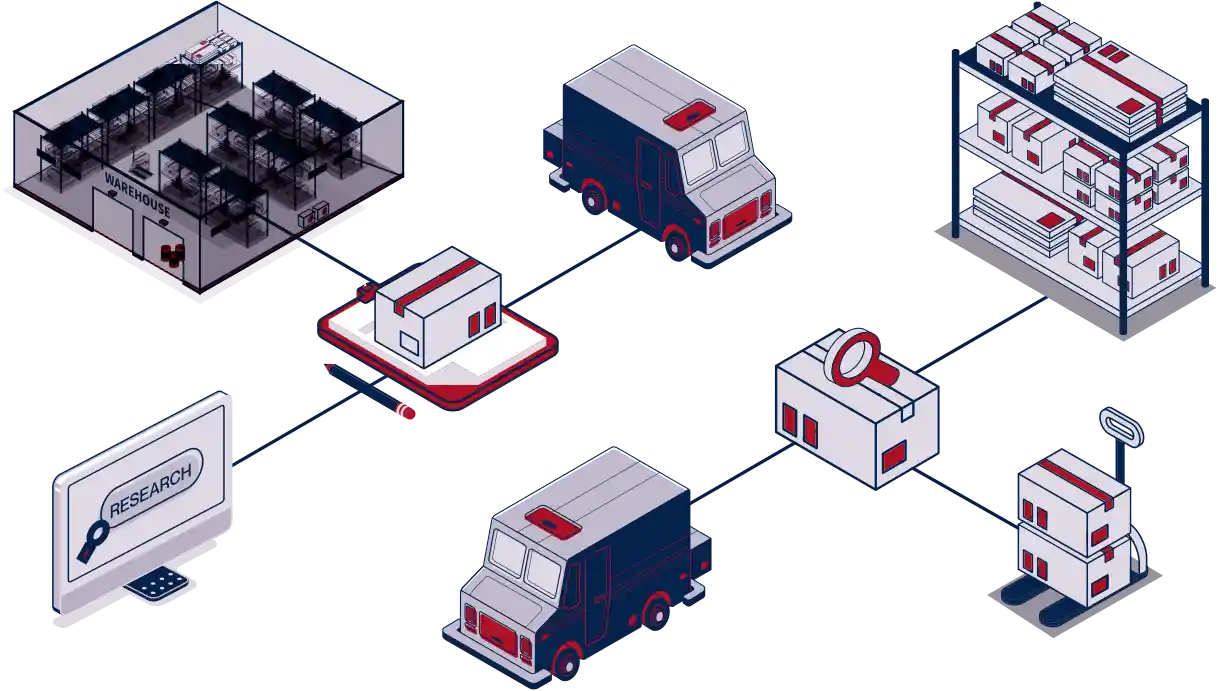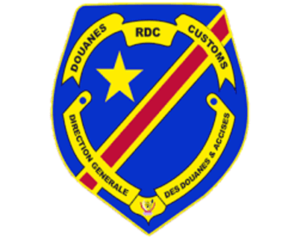Freight shipping between Thailand and the Republic Democratic of Congo: Rates -Transit time – Duties & taxes
Freight shipping between Thailand and the Republic Democratic of the Congo involves the transportation of goods and cargo. The rates for shipping vary based on factors such as cargo weight, volume, and mode of transportation. Transit time can vary depending on the chosen shipping method, with both air and sea options available. Duties and taxes may apply and should be considered when shipping between the two countries.
This guide aims to assist you in exporting goods from Thailand to the Republic of Congo. It will provide you with essential information on selecting the appropriate transportation method, comprehending the customs clearance procedure, and benefiting from expert advice offered by our team at Siam Ship
What is the best method of transport between Thailand and the Republic of Congo?
Generally, there are 4 modes of transport, air freight, sea freight, road freight, and rail freight. In this situation of the transportation between Thailand and the Republic of Congo, road freight and rail freight do not exist and are really not recommended because of the great distance between the two countries.
As a result, air freight and sea freight are the preferred modes of transportation for transporting goods between Thailand and the Republic of Congo.
Docshipper Note:
Besoin d'aide pour votre expédition ? N'hésitez pas à nous contacter, même pour une simple question. Choisissez l'option qui vous convient.
Chat en direct avec un expert Discutez-nous sur WhatsApp Remplissez le formulaire
Sea freight between Thailand and Republic of Congo
Overview – Ocean cargo from Thailand to Republic of Congo
Bilateral relations between Thailand and the Republic of Congo
Bilateral relations between Thailand and the Republic of Congo have steadily developed over the years, focusing on mutual cooperation and enhancing diplomatic ties.
The two countries have engaged in economic collaboration, with Thailand exploring investment opportunities in sectors such as agriculture, energy, and infrastructure development in the Republic of Congo. Additionally, Thailand has provided technical assistance and capacity-building programs to support the Republic of Congo’s development efforts. Cultural exchanges and people-to-people connections have also played a role in strengthening bilateral relations, with cultural events and Thai-Congolese friendship associations fostering understanding and friendship between the two nations. Overall, Thailand and the Republic of Congo continue to foster a positive relationship built on cooperation, shared interests, and a desire to deepen ties in various fields.
Main ports in the Republic of Congo
Port of Pointe-Noire
Located on the country’s southwestern coast, the Port of Pointe-Noire is a significant maritime gateway and serves as the principal port for international trade in the Republic of Congo.
Port of Brazzaville
Situated on the Congo River, the Port of Brazzaville is another significant seaport in the Republic of Congo. Although not directly on the coast, it serves as a crucial inland port, providing access to international trade through river transportation.
Port of Oyo-Ollombo
The Port of Oyo-Ollombo is located on the Oubangui River in the northern part of the Republic of Congo. It is an inland port that primarily handles cargo transported via river navigation.
Main ports in Thailand
The Port of Bangkok
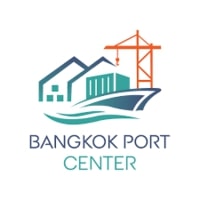 The Port of Bangkok is the largest port in Thailand, located on the Chao Phraya River in Bangkok. It is connected to the national railway system and has several docks for loading and unloading containers.
The Port of Bangkok is the largest port in Thailand, located on the Chao Phraya River in Bangkok. It is connected to the national railway system and has several docks for loading and unloading containers.
Laem Chabang Port
The Laem Chabang Port is located about 130 kilometers southeast of Bangkok in Chonburi province. It is the second-largest port in Thailand and is connected to the national
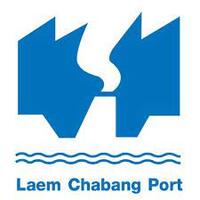 railway network for the transportation of goods to the interior of the country.
railway network for the transportation of goods to the interior of the country.
Map Ta Phut Port
Located in Rayong province, the Map Ta Phut Port is on the east coast of Thailand, this port is an important center for the country’s petrochemical industry. It has a rail yard and is connected to the national rail network.
Transit time between the Republic of Congo ports and Thailand ports
The transit time between ports in the Republic of Congo and ports in Thailand can vary depending on several factors, including the specific ports involved, the shipping line, weather conditions, and the chosen mode of transportation (e.g., sea or air).
As there are no direct shipping routes between the two countries, cargo shipments typically involve multiple transshipments and may take several weeks to reach their destination. It is advisable to consult with shipping agents or logistics providers for accurate and up-to-date information on transit times between specific ports in the Republic of Congo and Thailand.
Should I ship by groupage or full container between the Republic of Congo and Thailand?
There are three primary standard container sizes commonly used in shipping:
- The 40-foot HQ (High Cube), has a capacity of 76 cubic meters.
- The 40-foot container, has a capacity of 67 cubic meters.
- The 20-foot container, has a capacity of 33 cubic meters.
Each of these containers can be shipped by two different transportation methods.
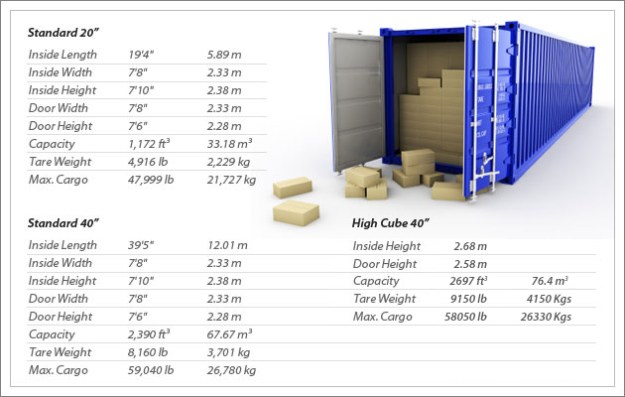
Full Container Load
is a shipping method where an individual or business utilizes the entire capacity of a container for their shipment. With FCL, one party has exclusive use of the container, reducing the risk of damage to the goods as there is no mixing or handling of other shipments within the container.
This method is particularly cost-effective for shipments that exceed shipments over 15 m³.
Less than Container Load
this is a shipping method that enables multiple individuals or businesses with smaller shipments to share a single container. This allows the goods of various parties to be consolidated and combined within the same container to fill it completely.
LCL is a cost-effective choice, particularly for shipments that are less than 15 m³ in volume.
Advantages of LCL
- LCL offers advantageous rates for small volumes
- LCL can ship smaller quantities more frequently, which helps reduce storage expenses
Disadvantages of LCL
- LCL shipping is that it may result in longer delivery times compared to full-container shipments
- LCL shipments involve the loading and unloading of goods from multiple customers sharing the same container
Advantages of FCL
- FCL shipping offers advantageous rates for large shipments of goods
- FCL shipping is the reduced risk of damage or loss of goods
Disadvantages of FCL
- FCL shipping is generally recommended to have a minimum volume of at least 15 m³ of goods
Special transports by sea between Thailand and the Republic of Congo
Reefer container
The reefer container is specifically designed for transporting chemicals or perishable products that require controlled temperatures. It is equipped with a cooling system that enables the maintenance of specific temperature conditions throughout the journey.
Roro
RORO (Roll On/Roll Off) specifically designed for transportation vehicles, including cars, trucks, vans, semi-trailers, and even rail cars. These vessels are widely regarded as the safest and most efficient option for transporting heavy or special cargo.
Bulk
Bulk carriers are specifically designed for transporting large quantities of solid bulk materials, such as minerals, grains, coal, or liquids like crude oil, gas, and chemicals. These vessels are characterized by their size and specialized features that make the loading and unloading process more efficient.
OOG
OOG (Out of Gauge) cargo refers to cargo that exceeds the dimensions of a standard container. To accommodate such goods, there are two types of containers available:
- Open Top Container: These containers do not have a roof, allowing for the loading of cargo that exceeds the height of standard containers.
- Flat Rack Container: They are designed without side walls or roofs, making them suitable for goods that cannot be loaded into standard containers due to their size, shape, or weight.
How much does the sea freight cost between Thailand and the Republic of Congo?
The cost of sea freight between Thailand and the Republic of Congo can vary depending on several factors. These factors include the volume and weight of the cargo, the shipping route, the chosen shipping method (FCL or LCL), the type of goods being transported, any additional services required (such as customs clearance or insurance), and current market conditions.
It is possible to estimate the cost if you know the exact weight and volume of your goods. To do this, you must follow these 3 steps:
- Determine the PU (Paying Unit): for this, you need to compare the mass and volume of your cargo based on the theory of sea freight, which states that one ton = 1 m³. The higher value between volume and mass will be the UP. For example, for a volume of 20 m³ and a mass of 25 tons, the UP will be 25 tons.
- Calculate the basic freight: to do this, multiply the cost of the UP by its number.
- Calculate the net freight: with the following formula, Base freight + BAF + CSP – Rebate. The result will be the cost of your sea freight.
Tariff surcharges
Tariff surcharges may apply on your transport between the Republic of Congo and Thailand, here are the main ones:
- Bunker Adjustment Factor (BAF): This surcharge is applied according to fluctuations in the price of fuel and may vary regularly depending on market conditions.
- Security Surcharge (SCS): This surcharge is applied to cover costs related to port and vessel security.
- Overcapacity surcharge (OWS): This surcharge is applied when demand for shipping is lower than supply, resulting in excess vessel capacity.
- Congestion surcharge (CGS): This surcharge is applied in ports where congestion is high, resulting in extended waiting times for ships.

Air freight between Thailand et Republic of Congo
Classic or Express air freight
There are two types of air freight:
- Classic air freight: Classic air freight is a standard air transportation service that offers reliable and cost-effective delivery of goods. It involves the shipment of cargo through established air routes and scheduled flights.
- Express airfreight: Express air freight, also known as expedited or priority air freight, is a premium air transportation service designed for time-sensitive shipments. This option guarantees the fastest possible delivery of goods by utilizing dedicated express or expedited flights.
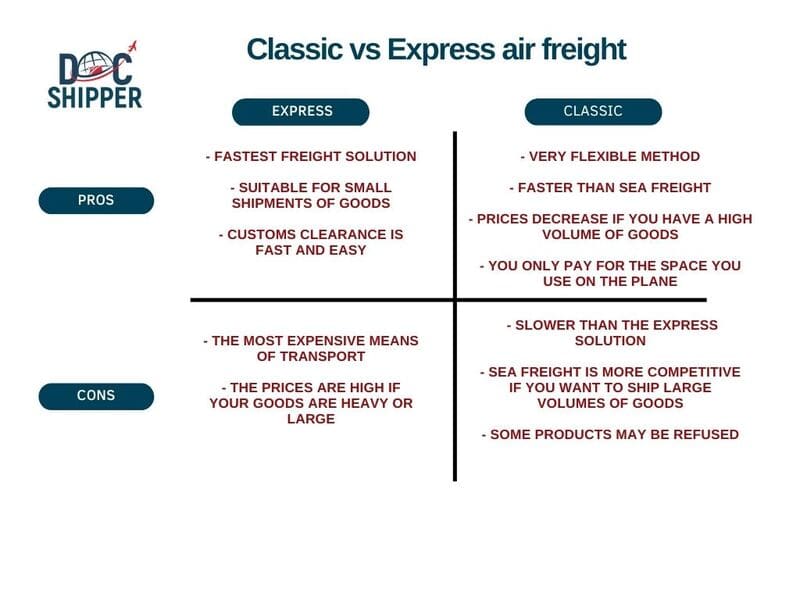
Main airports in Thailand
Suvarnabhumi Airport
Suvarnabhumi Airport is a major cargo hub for the Asia-Pacific region, offering direct air connections to many international destinations.
Don Mueang Airport
Don Mueang is considered one of the oldest international airports in the world. Commercial flights began in 1924, making it one of the oldest commercial airports in the world.
Chiang Mai Airport
Although Chiang Mai Airport is not as large as Bangkok Airport, it plays an important role in the logistics of the northern region of Thailand by providing direct connections to major domestic and international destinations.
Main airports in the Republic of Congo
Maya-Maya Airport (Brazzaville International Airport)
Located in the capital city of Brazzaville, Maya-Maya Airport is the primary international airport in the Republic of Congo. It serves as the main gateway for both domestic and international flights, connecting the country to various destinations around the world.
Pointe-Noire Airport (Antonio Agostinho Neto International Airport)
Situated in the city of Pointe-Noire, Pointe-Noire Airport is the second-largest international airport in the Republic of Congo. It serves as an important hub for both passenger and cargo flights, facilitating air travel and trade in the southern region of the country.
Dolisie Airport (Dolisie Antoine-Richard Airport)
Dolisie Airport, also known as Dolisie Antoine-Richard Airport, is located in the city of Dolisie. Although smaller in size compared to Maya-Maya and Pointe-Noire airports, it serves as a domestic airport, providing connections to various destinations within the Republic of Congo.
What are the advantages of air freight?
- Speed of transport
- Rarely late
- Good geographical coverage
What are the disadvantages of air freight?
- High price
- Not possible to transport really heavy goods
- The security at the airport is much higher which can make you lose time during the control
How much does it cost to transport cargo by air from Thailand to the Republic of Congo?
The cost of transporting cargo by air from Thailand to the Republic of Congo can vary depending on several factors. These include the weight and dimensions of the cargo, the type of goods being transported, the urgency of delivery, and any additional services required.
Air freight rates are typically calculated based on a combination of factors, such as the chargeable weight or volumetric weight of the shipment.
How to calculate the volumetric weight of your shipment?
The volumetric weight of a package is determined by calculating the space it occupies based on its dimensions and gross weight. To determine the volumetric weight, measure the length, width, and height of the package, and convert these measurements into cubic meters. Then, apply the following formula:
Volumetric weight = (length x width x height) / 5000
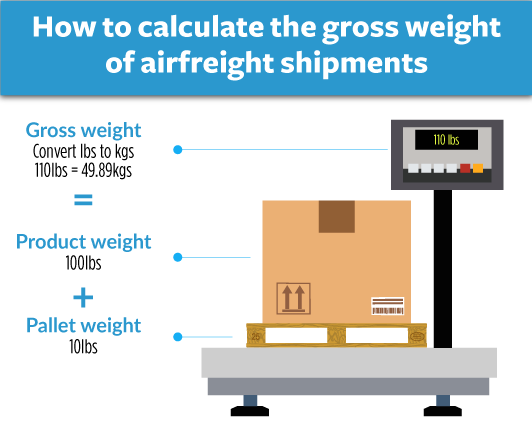
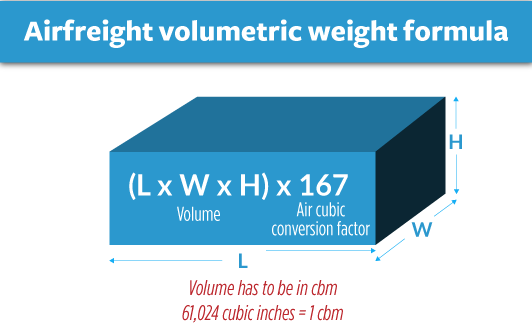

Door-to-door delivery between Thailand and the Republic of Congo
We offer comprehensive door-to-door delivery services between Thailand and the Republic of Congo. With our expertise in international logistics, we ensure a seamless and hassle-free transportation process from the origin in Thailand to the final destination in the Republic of Congo. Our door-to-door service includes the coordination of pickup, customs clearance, freight forwarding, and final delivery to the designated address.
What are the advantages of door-to-door services?
- Quick delivery: As everything is completed in a 24-hour period, you can send it if your delivery time is during the day.
- Door-to-door delivery is always available, so your package will come even late at night or on a holiday.
- Convenience: Receiving the package at your location rather than having it delivered to you is better for you.
- Your cargo can be qualified for courier delivery if it is a manageable size.
What are the disadvantages of door-to-door services?
- High cost: The cost increases with the urgency of the cargo, as well as with the package’s size and weight, which also affect the cost.

Customs clearance in the Republic of Congo for freight shipping from Thailand
Customs clearance in any country is an important and mandatory step that must be done when importing and exporting.
When you import goods in the Republic of Congo, the customs clearance will consist in paying the customs duties and the VAT. It is also necessary to be attentive to the regulations and standards of the country where you are shipping to avoid having your goods blocked at customs.
Here are the prohibited and regulated products in the Republic of Congo :
- Prohibited products: drugs, counterfeit goods, plants, animals, and some dangerous materials…
- Regulated products: food (fruits, vegetables, meat, poison, milk), animals, weapons and ammunition, works of art, medicines, products…
Customs valuation
The customs value corresponds to the real economic value of the goods. Its estimation is based on precise rules harmonized at the European level. Thus, the General Rules for the Determination of Customs Value provide for several valuation methods, which are set out in Articles 70 to 74 of the European Customs Code (ECC).
The customs value makes it possible, when importing goods, to determine the duties and taxes that will be collected by the State: customs duties, additional duties, anti-dumping duties, dock dues, VAT, etc., and when exporting, to obtain the basis for certain duties and to collect the data necessary for statistical monitoring of foreign trade.
What are the customs duties and taxes in the Republic of Congo ?
- Import duties: These are taxes imposed on certain goods imported into the Republic of Congo, based on the product’s classification, value, and country of origin. Import duties can vary widely depending on the product and can range from a few percent to more than 50% of the product’s value.
- Value Added Tax (VAT): This is a tax on the value added at each stage of production and distribution of goods and services. For most goods imported into the Republic of Congo, the VAT rate is currently 20%. The VAT is usually paid by the importer when the goods enter the country.
- Excise duties: These are taxes on specific products, such as alcohol, tobacco, and fuel. Excise duties are often based on the quantity or volume of the product and are charged in addition to import duties and VAT.
- Environmental taxes: Some products may be subject to environmental taxes, such as taxes on packaging or products that contain hazardous substances.
How to calculate customs duties and taxes
Calculating customs duties and taxes on imports into the Republic of Congo can be a complex process that depends on several factors, such as the type of product, its value, and its country of origin. Here are the general steps to follow:
- Determine the product’s tariff classification: The first step in calculating customs duties is to determine the product’s tariff classification. This is done by consulting the EU’s Common Customs Tariff (CCT), which lists the various product categories and their corresponding duty rates. You’ll need to know the Harmonized System (HS) code for your product to determine its tariff classification.
- Determine the product’s value: The next step is to determine the product’s value, which is usually the invoice value of the goods plus any additional costs, such as shipping and insurance.
- Calculate the customs duty: Once you have determined the product’s tariff classification and value, you can calculate the customs duty. The duty rate will depend on the product’s tariff classification, its value, and the country of origin.
- Calculate the VAT: In addition to customs duties, you will also need to calculate the VAT. The VAT rate in France is currently 20%, but there may be reduced rates for certain products, such as food and books.
- Calculate any other taxes or fees: Depending on the product, there may be other taxes or fees to consider, such as excise duties or environmental taxes.
It’s important to note that the customs clearance process and the calculation of duties and taxes can be complex. If you’re unsure about how to calculate the duties and taxes for your specific import, it’s always best to consult with a customs broker or freight forwarder like Siam Shipping. We can help you navigate the process and ensure that you’re meeting all the necessary requirements.
How to find the HS code?
A system of classification for products used in international trade is the HS code (Harmonized System). It organizes goods into categories based on their nature and intended use, making the collection of statistical data and the customs clearance process easier. The HS system contains more than 5,000 different products, each of which is categorized using a distinct eight-digit number.

You can consult these websites to know the HS code of Thailand products and the Republic of Congo.
Calculating customs duties with the HS Code
Now that you have the HS code of your products, you can find the associated tariffs on the Republic of Congo customs website.
Here is a small illustrated guide to help you understand how to do it.
Enter your HS code and country of origin.
Then, consult taxes applicable to your product.
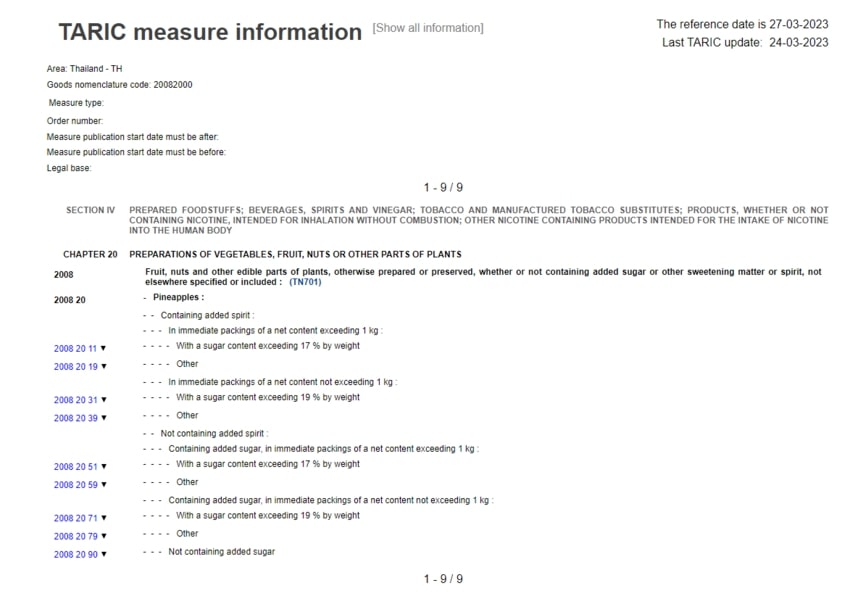
Does Siam Shipping charge customs duties?
No, no commission is taken from Siam Shipping. As proof, we will send you all the official documents provided by French customs. We will only collect the customs clearance fees, as we declare your goods to the customs for you.
The fees associated with customs duties and taxes will be collected by the Republic of Congo government.
Customs procedures and contact

The customs services
Required documents
Original invoice
It is an essential document to allow the clearance of goods in the Republic of Congo and Thailand.
Bill of lading
This document is used to prove that the product has been delivered by the exporter and records all the details of the transport procedure.
The packing list
This is a complete list created to detail the items that the shipper is shipping. It is essential throughout the shipment and must be present at every stage of the product delivery.
Certificate of Origin
This document certifies the country of origin of the goods.
CE conformity
A certificate of conformity is a document that proves that a product complies with environmental, safety, and health requirements.
Additional logistics services
Venture beyond shipping and customs with SIAM Shipping! Explore our wide array of additional logistics services, ensuring your supply chain operation runs smoothly from start to finish. Let's take care of everything, together.
Warehousing and storage
Finding the right warehouse for your goods can feel like a treasure hunt—a steady temperature for your delicate items is a must. Storing chocolates? You wouldn’t want a meltdown! For a stress-free solution that considers all conditions, explore our warehousing services, designed to keep your goods in prime condition.
Packaging and repackaging
Inherent challenges in shipping from China to France make quality packaging vital. Having a reliable agent can help ensure your wine barrels or electronics are suitably packed and repacked, reducing the risk of damages. Whether it's ceramics securely cushioned or machinery components assembly-segregated, great packaging caters to every product. Find out more about securing your cargo on our dedicated page: Freight packaging.
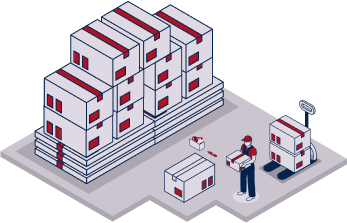
Cargo insurance
Contrary to fire insurance limited to premises, transport insurance is your flotation device over rough trade seas. Imagine sending a pricey, custom-built machinery and it gets damaged in transit. Ouch! But, with cargo insurance, you're covered and can breeze through such setbacks. It's the booster dose of prevention to keep your trade immunity sky-high.
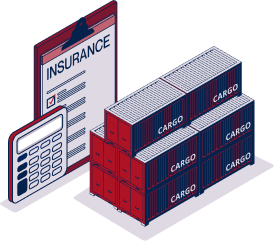
Personal effects shipping
Moving precious belongings from China to France? No worries, we manage fragile or bulky items with extra care, ensuring they reach your new French home intact. Like Aunt Mei's porcelain vase, we pack, transport, and deliver with professionalism. Save time and energy for croissants and vin rouge!
